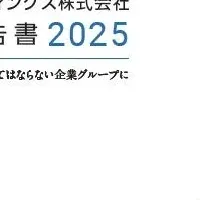
Autodesk Reports Strong Financial Performance for Fiscal Year 2025 Amidst Strategic Business Changes
Autodesk Reports Strong Financial Performance for Fiscal Year 2025 Amidst Strategic Business Changes
Autodesk, Inc. has announced impressive financial results for the fourth quarter and the entirety of fiscal year 2025. Based in San Francisco and listed on NASDAQ as ADSK, the company reported a notable revenue increase of 12% year-over-year, achieving a reported total of $1.64 billion for Q4 and $6.13 billion for the full year. This financial uptick reflects Autodesk's commitment to innovation in design and construction cloud technologies alongside an enhanced strategic business focus.
Key Financial Metrics
In its latest earnings release, Autodesk outlined several critical financial highlights:
- - Total revenue for Q4 grew from $1.47 billion to $1.64 billion, with subscription revenue alone reaching $1.52 billion, a remarkable increase of 14%.
- - For the full fiscal year, the income from operations updated to $1.35 billion, compared to $1.13 billion in the previous year, showcasing a robust operational margin that increased to 22% from 21%.
- - Notably, GAAP diluted earnings per share (EPS) rose to $5.12, demonstrating the company's efficient cost management and stronger operational framework.
The numbers underline that Autodesk derives a significant portion of its revenue, approximately 97%, from recurring sources, emphasizing the success of their subscription-based model which allows clients continuous access to their cutting-edge design software.
Strategic Reallocations
Autodesk's leadership, led by CEO Andrew Anagnost, emphasized the company’s strategic shift to a convergence model, aligning its design and operational capabilities within the cloud. During the earnings conference call, Anagnost articulated the need for the company to pivot resources towards areas marked by rapid advancements in artificial intelligence and cloud services. This intent to optimize sales and marketing strategies aims to improve customer engagement and satisfaction in an evolving market.
However, alongside these growth strategies, Autodesk announced a difficult yet necessary decision to implement a restructuring plan. Approximately 1,350 positions, or 9% of its workforce, will be eliminated to streamline operations and enhance productivity. This move, while challenging, is expected to result in cost savings and reallocation of resources where they are most needed, with anticipated charges of around $135 million to $150 million.
Performance Across Regions
Geographically, the results from various segments reflect Autodesk's diverse operations:
- - In the Americas, revenue reached $730 million, a growth of 11% due to strong demand in the U.S. market.
- - The EMEA (Europe, Middle East, and Africa) sold $623 million in total revenue, up 14%, while the APAC (Asia Pacific) segment grew by 7% reaching $286 million.
These figures underscore Autodesk's strong international presence and potential for future growth in both established and emerging markets, reflecting an expanding customer base globally.
Looking Ahead
Faced with an evolving competitive landscape and various economic pressures, Autodesk has laid out an optimistic outlook for the next fiscal year. The first quarter guidance for FY26 suggests revenues of $1.6 to $1.61 billion with a targeted GAAP EPS ranging between $0.76 to $0.90. Furthermore, the business anticipates continued investments in product development and market expansions despite the restructuring challenges.
As Autodesk embarks on this exciting phase characterized by innovation and transformation, it reaffirms its dedication to providing state-of-the-art solutions for designers, engineers, and builders. The company is poised to harness its strengths to improve operational efficiencies and deliver sustainable long-term value to its shareholders and customers alike.
In summary, Autodesk's fourth quarter and full-year fiscal analysis reflect a polishing of its market strategy, significant growth in revenue and operational efficiency, while adapting to the industry’s needs through strategic reallocations and a forward-looking business model.
Topics Business Technology)










【About Using Articles】
You can freely use the title and article content by linking to the page where the article is posted.
※ Images cannot be used.
【About Links】
Links are free to use.